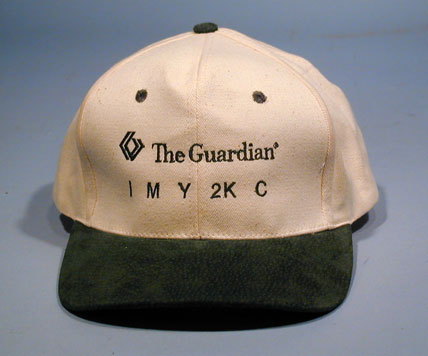As COVID-19 deaths spiked in 2020, Suzanne Firstenberg’s public art installation "In America: How could this happen…"
History Explorer Results (37)
Related Books (3)

Grade Range:
K-12
Resource Type(s):
Artifacts, Primary Sources
Date Posted:
6/19/2012
While training for combat on the fields of Yale University in 1917, Private J. Robert Conroy found a brindle puppy with a short tail. He named him Stubby, and soon the dog became the mascot of the 102nd Infantry, 26th Yankee Division. He learned the bugle calls, the drills, and even a modified do

Grade Range:
5-12
Resource Type(s):
Reference Materials
Date Posted:
5/30/2012
This online exhibition examines the public health, scientific, and political responses in the early phase (1981-87) of the global HIV and AIDS pandemic. The website features photographs, magazine covers and public health information pamphlets from AIDS service organizations.

Grade Range:
K
Resource Type(s):
Interactives & Media, Worksheets
Date Posted:
12/15/2011
In this episode of the History Explorer podcast, curator Deborah Warner discusses the role of sugar and various sweeteners in American history. In addition to being a staple in the American diet, sugar's role in our nation's history touches on subjects of science and technology, labor and ca

Grade Range:
9-12
Resource Type(s):
Reference Materials, Primary Sources
Date Posted:
12/23/2010
Beginning eight days after the first shots of the American Civil War were fired and three days before his wedding, William Steinway’s remarkable diary bears witness to one of the most dynamic periods in American history. This website examines the life of William Steinway and the display of his

Grade Range:
6-12
Resource Type(s):
Interactives & Media
Date Posted:
10/18/2010
Get an introduction to some of today’s top researchers and the basics of biotechnology, biofuel, genetics, health, and agriculture. This video features interviews with four leading scientists in biotechnology who tell us what drew them to the field: Dr. Pardis Sabeti, Assistant Professor of

Grade Range:
K-12
Resource Type(s):
Artifacts, Primary Sources
Date Posted:
12/31/2009
In the early days of electronic computers, memory was not as efficient or inexpensive as it is today. To save memory space, programs stored as few digits as possible for dates. In COBOL, for instance, January 1, 1999, was stored as 010199. As Year 2000, or Y2K for short, approached, it became app

Grade Range:
K-12
Resource Type(s):
Artifacts, Primary Sources
Date Posted:
7/9/2009
This early respirator for producing artificial respiration over long periods of time was designed and constructed by the donor, John Haven Emerson. Completed in July 1931, it was first used in the summer of that year at the Providence City Hospital, Providence, R.I...

Grade Range:
K-12
Resource Type(s):
Artifacts, Primary Sources
Date Posted:
11/14/2008
Laying the groundwork for the Chicano movement of the 1960s, organizations like the American G.I. Forum began advocating on behalf of Hispanic veterans who were denied the educational, health care, housing, and other rights guaranteed by the G.I. Bill. Often working in concert with the League of

Grade Range:
6-12
Resource Type(s):
Reference Materials
Date Posted:
11/3/2008
This exhibit showcases two major themes: the history and use of papier-mâché anatomical models and their construction, conservation and preservation, using the Museum's collection of papier-mâché anatomical models. The exhibition also includes an interactive game named "Body Parts"

Grade Range:
K-12
Resource Type(s):
Artifacts, Primary Sources
Date Posted:
10/27/2008
AbioCor Total Artificial Heart is the first electro-hydraulic heart implanted in a human. Approved by the United States Food and Drug Administration for clinical trails, the AbioCor was implanted in Robert Tools by cardiac surgeons Laman Gray and Robert Dowling on July 2, 2001, at Jewish Hospital












